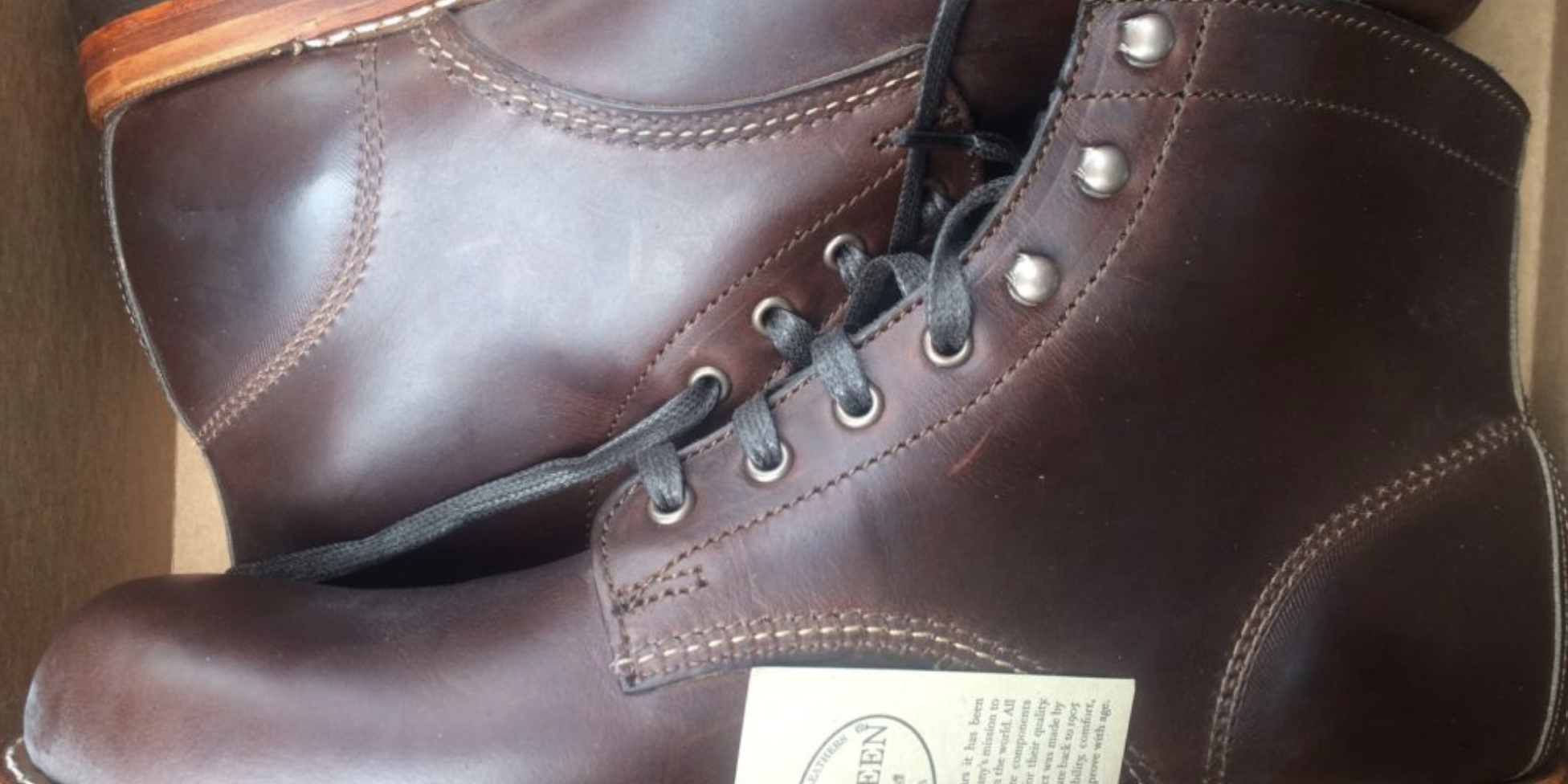Good boots are a thing of beauty, and these days, disposable. The 1000-mile boot is made to last… but is it competitive with modern hiking boots?
Unlike most other pairs of boots you’ll ever own, the Wolverine 1000-Mile boots advertise right up front that they’re going to take you places… for a long time. They will. The boot is very well made of premium Horween leather and suede, metal eyelets and stock with waxed canvas laces – which were the first breakage on this product, and an easy fix with some spare paracord. A goodyear welt over a cork midsole and Vibram heel complete the boot, and this is where we can start moving from excellent durability, into substandard comfort.
Wolverine 1000-Mile Boots
Duration of Testing: 3+ years
Utility – 5
Durability – 7
Comfort – 4
Weight – 5
Cost – 4
Overall – 5
Bottom Line: On the Fence
One of the charges we pride ourselves on leading at ISG is avoiding the consumer culture, and planned obsolescence. Skill and quality goods are the base upon which good technology are built for maximum effect. For this reason, when looking for good equipment, we often turn to low tech, quality goods that aren’t made to be disposable.


When you buy anything engineered 100 years ago, you need to understand that comfort wasn’t the first condition to be satisfied; such is the case with the 1000-mile boot. I found that within 6-months or so of running obstacle courses, hiking, hitting the range, and exploration, that the Goodyear Welt was wearing substantially. It’s design affords no traction, which makes climbing, or dealing with inclement weather a chore for a better boot. Finally, the cork midsole isn’t exactly Dr. Scholl’s when it comes to comfort. During a 15-mile ruck/obstacle course, the leather of the boot began the downward spiral into blisters due to rubbing.

Wolverine’s 1000-mile boot is, however, resoleable, and inserts are available, so I went back to the drawing board; the first time, I did a half-sole to add traction. Short story: The half sole didn’t help.
Back to the drawing board, and I went with the Vibram full-sole “commando” treads and Dr. Scholl’s inserts tightened up the comfort and the grip. Now, roughly 400 miles in, we’ve got a pretty comfortable boot. Wolverine might be shortchanging themselves, as well; ISG’s punishing honesty considered, the 1000-mile boot is probably a 2000-mile boot.

Freshly waxed leather goods. The Wolverine’s with the Vibram Commando full tread. This tread literally transformed the boot from a hipster accessory to a practical piece of footwear.
With some care and a good cobbler (the kind that repairs boots, not the delicious baked treat), these boots are apt to last you a very long time… And for a boot that costs nearly $400, it damn well better. The good news is, that it probably will. While the comfort isn’t perfect, the durability is exceptional. Leather boots will require some special care, such as wax and time to dry. Compared to other boots, the waterproofing is weak… when the boots get wet, they can – and will – start molding. Finally, for most people, the $360 for the boot, the $120 for the sole, and another $20 or so for the insert is going to set you back almost $500, so let’s address that.
As compared to another favorably reviewed boot, the Vasque St. Elias boot, I got 2 years of service out of them for about $200. Worked out, you can expect the lifespan of the 1000-mile boot to be around 8 years before it needs serious help. Another solid boot, the Wolverine Cabor (still in testing) will probably give better life at a lower cost, but ultimately cannot be repaired.
The 1000-mile boot isn’t a great go-to. It’s beautifully crafted and stylish, rugged and simple. It’s also uncomfortable as sold, and lacks utility. It can be turned into a solid performer, but the investment in the boot is steep. For that, you get boots with a long life that look sharp in a variety of environments, from work to play.








